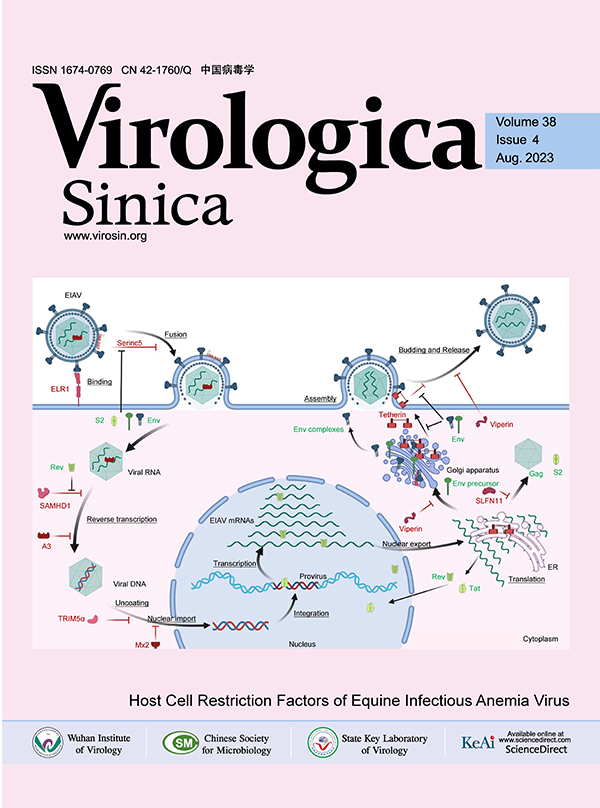-
Baeten, J.M., McClelland, R.S., Corey, L., Overbaugh, J., Lavreys, L., Richardson, B.A., Wald, A., Mandaliya, K., Bwayo, J.J., Kreiss, J.K., 2004. Vitamin A supplementation and genital shedding of herpes simplex virus among HIV-1-infected women:a randomized clinical trial. J Infect Dis 189, 1466-1471.
-
Bassani, S., Cingolani, L.A., 2012. Tetraspanins:Interactions and interplay with integrins. Int J Biochem Cell Biol 44, 703-708.
-
Freeman, E.E., Weiss, H.A., Glynn, J.R., Cross, P.L., Whitworth, J.A., Hayes, R.J., 2006. Herpes simplex virus 2 infection increases HIV acquisition in men and women:systematic review and meta-analysis of longitudinal studies. AIDS 20, 73-83.
-
Huang, Y., Zucker, B., Zhang, S., Elias, S., Zhu, Y., Chen, H., Ding, T., Li, Y., Sun, Y., Lou, J., Kozlov, M.M., Yu, L., 2019. Migrasome formation is mediated by assembly of micron-scale tetraspanin macrodomains. Nat Cell Biol 21, 991-1002.
-
Jiang, D., Jiang, Z., Lu, D., Wang, X., Liang, H., Zhang, J., Meng, Y., Li, Y., Wu, D., Huang, Y., Chen, Y., Deng, H., Wu, Q., Xiong, J., Meng, A., Yu, L., 2019. Migrasomes provide regional cues for organ morphogenesis during zebrafish gastrulation. Nat Cell Biol 21, 966-977.
-
Jiao, H., Jiang, D., Hu, X., Du, W., Ji, L., Yang, Y., Li, X., Sho, T., Wang, X., Li, Y., Wu, Y.T., Wei, Y.H., Hu, X., Yu, L., 2021. Mitocytosis, a migrasome-mediated mitochondrial quality-control process. Cell 184, 2896-2910 e2813.
-
Kimberlin, D.W., Whitley, R.J., 2007. Antiviral therapy of HSV-1 and -2, in:Arvin, A., Campadelli-Fiume, G., Mocarski, E., Moore, P.S., Roizman, B., Whitley, R., Yamanishi, K. (Eds.), Human Herpesviruses:Biology, Therapy, and Immunoprophylaxis, Cambridge.
-
Liu, Y., Li, S., Rong, W., Zeng, C., Zhu, X., Chen, Q., Li, L., Liu, Z.H., Zen, K., 2020. Podocyte-Released Migrasomes in Urine Serve as an Indicator for Early Podocyte Injury. Kidney Dis (Basel) 6, 422-433.
-
Ma, L., Li, Y., Peng, J., Wu, D., Zhao, X., Cui, Y., Chen, L., Yan, X., Du, Y., Yu, L., 2015. Discovery of the migrasome, an organelle mediating release of cytoplasmic contents during cell migration. Cell Res 25, 24-38.
-
Sattentau, Q., 2008. Avoiding the void:cell-to-cell spread of human viruses. Nat Rev Microbiol 6, 815-826.
-
Zhang, C., Li, T., Yin, S., Gao, M., He, H., Li, Y., Jiang, D., Shi, M., Wang, J., Yu, L., 2022a. Monocytes deposit migrasomes to promote embryonic angiogenesis. Nat Cell Biol 24, 1726-1738.
-
Zhang, N., Gao, S., Zhang, L., 2022b. Chikungunya virus nsP1 induces migrasome formation. J Infect 85, e158-e161.
-
Zhang, Y., Wang, J., Ding, Y., Zhang, J., Xu, Y., Xu, J., Zheng, S., Yang, H., 2020. Migrasome and Tetraspanins in Vascular Homeostasis:Concept, Present, and Future. Front Cell Dev Biol 8, 438.
-
Zhao, X., Lei, Y., Zheng, J., Peng, J., Li, Y., Yu, L., Chen, Y., 2019. Identification of markers for migrasome detection. Cell Discov 5, 27.
-
Zhu, M., Zou, Q., Huang, R., Li, Y., Xing, X., Fang, J., Ma, L., Li, L., Yang, X., Yu, L., 2021. Lateral transfer of mRNA and protein by migrasomes modifies the recipient cells. Cell Res 31, 237-240.
















 DownLoad:
DownLoad: